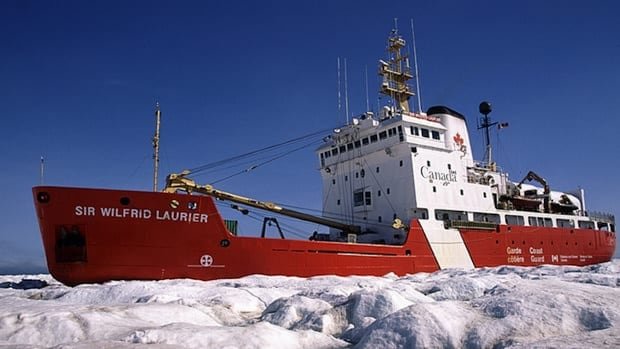The Canadian military, along with potentially the coast guard, is actively monitoring a Chinese research vessel as it ventures back to Arctic waters near Alaska for the second consecutive year. Recent data compiled by independent researcher Steffan Watkins and a ship tracker revealed that a Canadian air force CP-140 surveillance plane was observed in the vicinity of the Xue Long 2 as it navigated the Bering Strait.
According to Watkins’s findings, the aircraft was relocated to Anchorage, Alaska, from its base in Comox, B.C., on July 9. Since then, it has undertaken four patrols, including the most recent one involving the Xue Long 2, which is China’s inaugural domestically constructed polar research vessel. Despite flight tracking information publicly available showing the CP-140’s patrol route, the Department of National Defence declined to confirm the aircraft’s presence.
However, on Tuesday, the military issued a statement affirming their continued activities to detect, deter, and defend against potential threats within and around Canada. Maj. Alexander Naraine, a spokesperson for the military’s joint operations centre, stated that the Xue Long 2 is currently not within Canadian territorial waters, and the Canadian Joint Operations Command is actively monitoring it with a CP-140 Aurora aircraft stationed in Alaska.
Naraine emphasized that monitoring will persist as long as the Xue Long 2 operates in close proximity to Canadian territorial waters. He highlighted that rival nations are exploring Arctic waters and the seabed, conducting surveillance and gathering intelligence using dual-purpose research vessels and surveillance platforms.
The Canadian Coast Guard disclosed its involvement in monitoring illegal fishing activities. The Chinese icebreaker set sail from Shanghai on July 6, passing close to Japan before proceeding into Russian waters. The CCGS Sir Wilfrid Laurier reportedly shadowed the Xue Long 2 throughout its journey from Japan, maintaining parallel positioning in international waters until the vessels entered the Bering Strait.
Initially, the coast guard was vague about the Sir Wilfrid Laurier’s mission and referenced a media release from June 9 outlining high seas patrols to combat illegal fishing in the North Pacific. However, later on Monday, the agency denied shadowing the Xue Long 2, asserting its focus on monitoring migratory routes of key species like Pacific salmon.
Despite this claim, analyzing ship-tracking data against known salmon migration routes revealed that only a fraction of the recent voyage aligned with these paths. Additionally, the coast guard ship’s helicopter was scheduled to conduct patrols with Canadian fishery officers in Japan to oversee fishing vessels and ensure compliance with international regulations.
Prime Minister Mark Carney has committed to enhancing the capabilities and reach of the Canadian Coast Guard to bolster the country’s defenses. The government plans to integrate the civilian agency, currently under the Fisheries Department, into Canada’s NATO defense capabilities to enhance maritime surveillance and safeguard national sovereignty.
Notably, last summer, the Royal Canadian Navy dispatched a frigate to monitor the Xue Long 2 during its Arctic expedition, with the Department of National Defence acknowledging the mission after more than a week.
Arctic expert Michael Byers from the University of British Columbia emphasized the importance of transparent communication about the perceived security risks posed by the Chinese vessel. Military experts have characterized the Chinese ice research ship as dual-use, hinting at potential military or defense functions. Byers raised concerns about assumptions regarding the vessel’s dual-use capabilities and called for a careful examination of statements regarding Chinese activities in the Arctic.
Acknowledging the strained relations with China, Byers supported the monitoring efforts of the military and coast guard, citing concerns about China’s military expansion and its support for Russia amid the Ukraine conflict. He emphasized the necessity of monitoring Chinese government vessels sailing near the United States or Canada.


